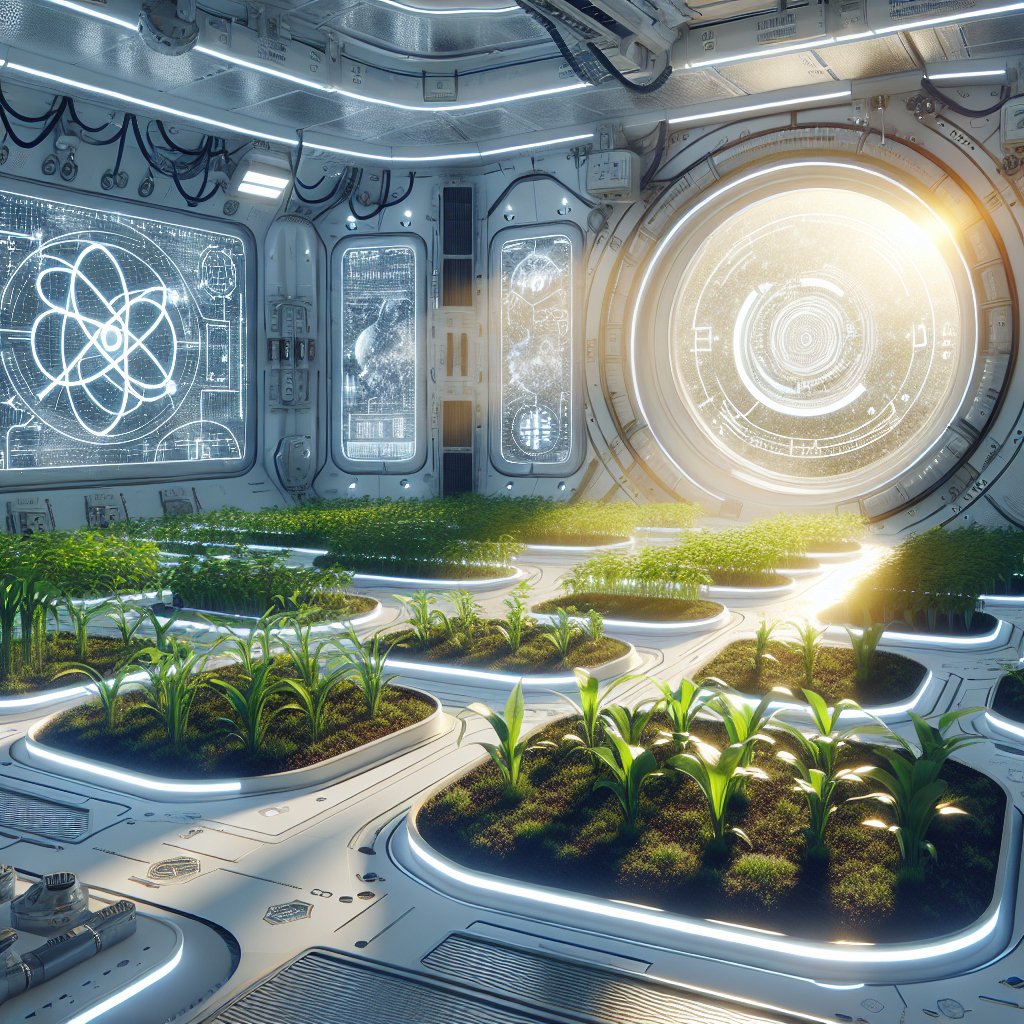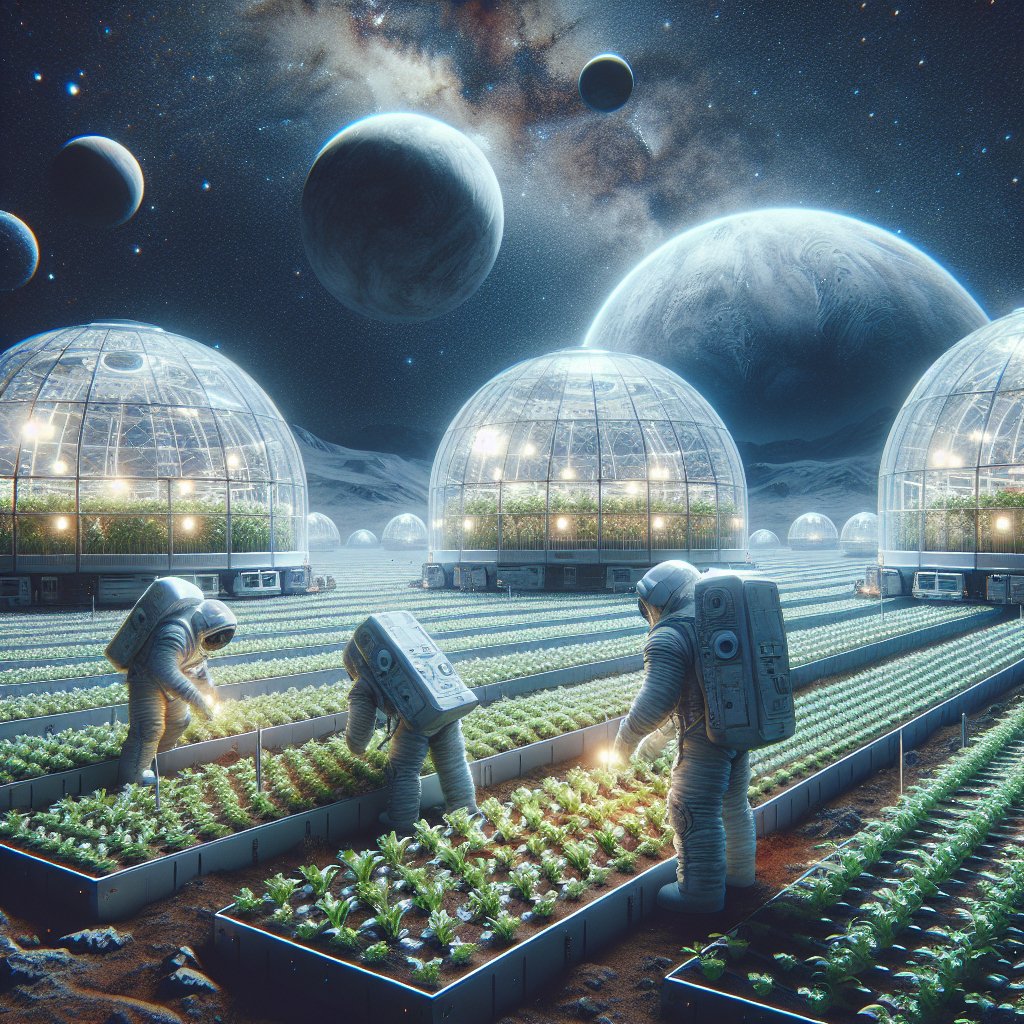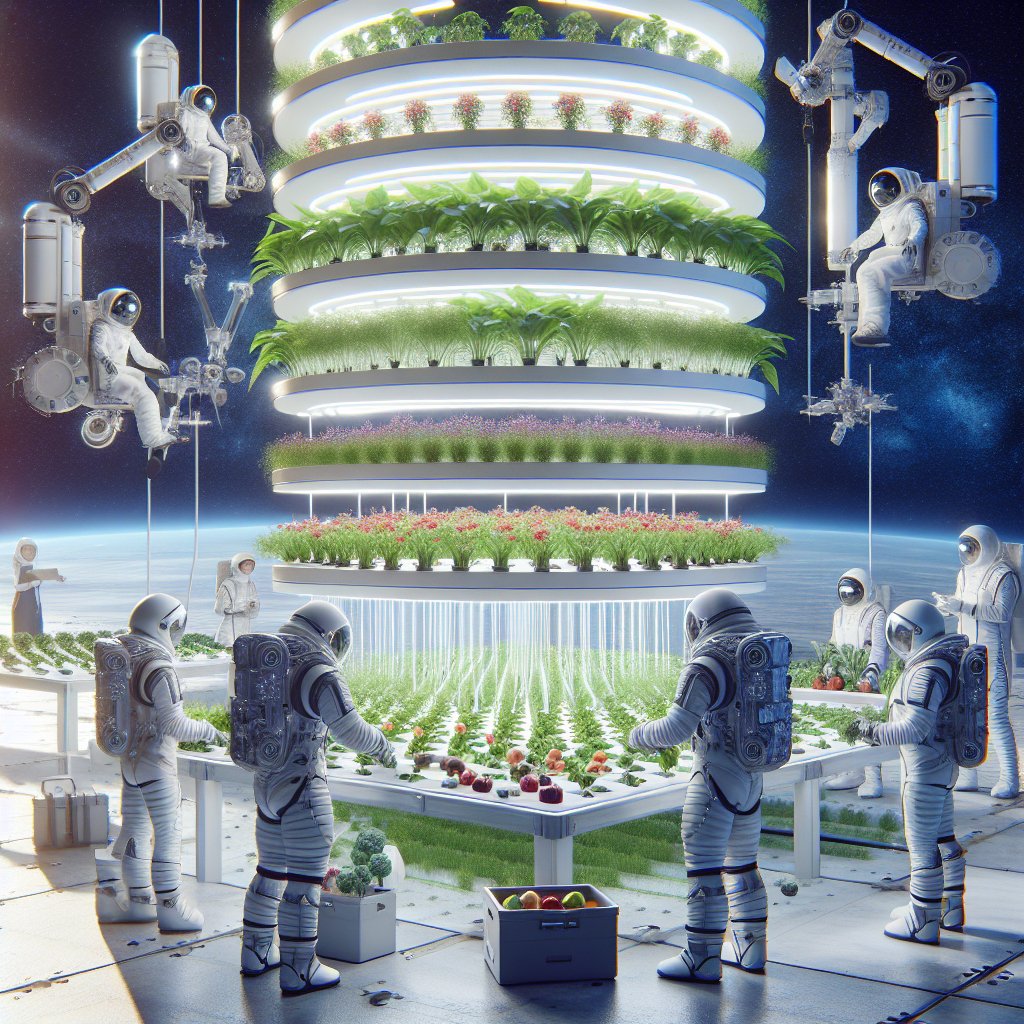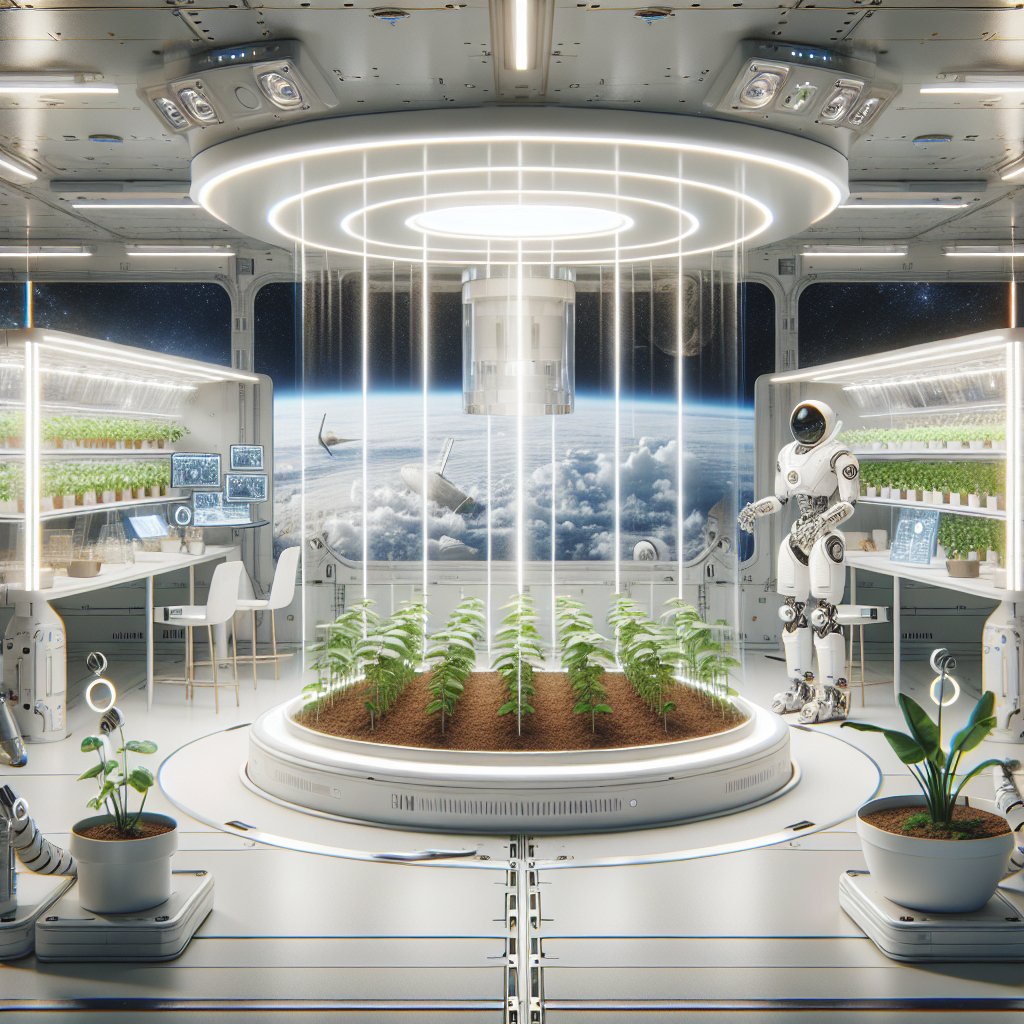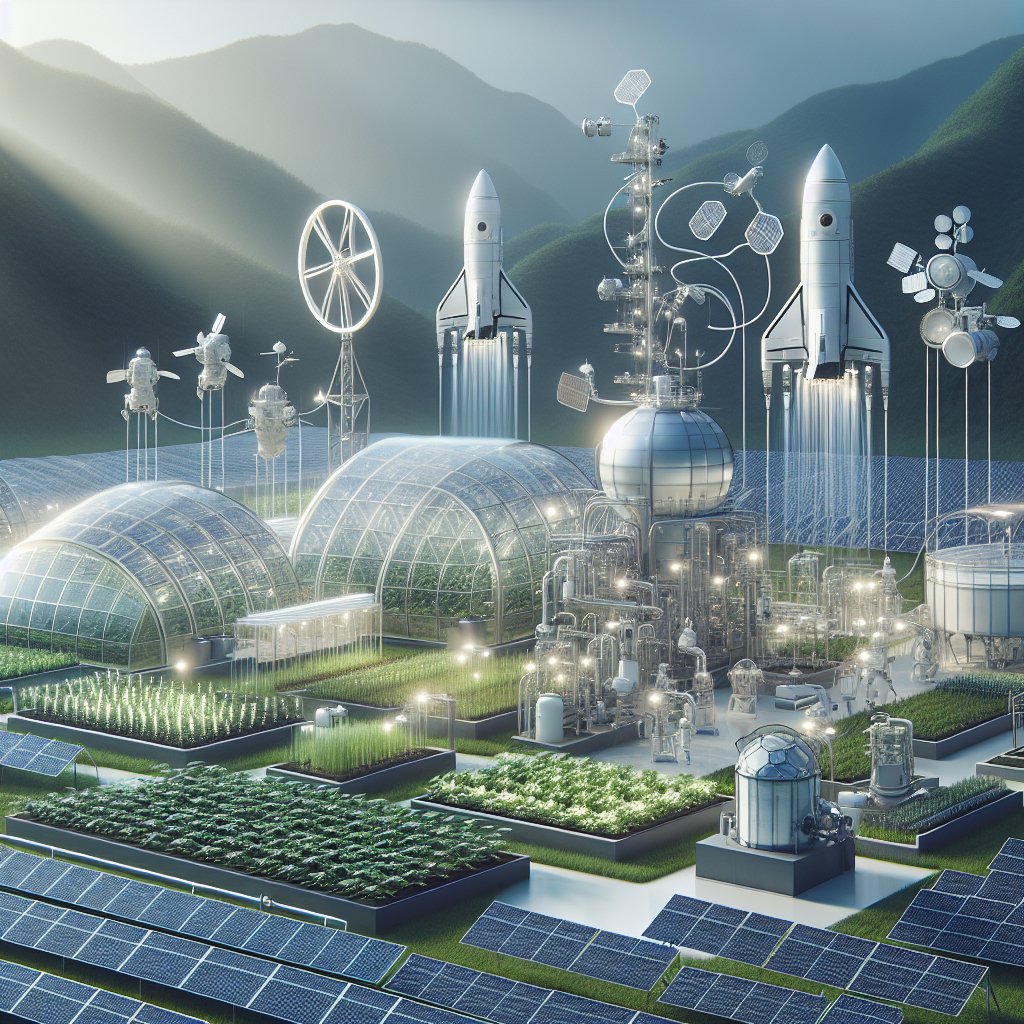The intersection of agriculture and space exploration is a fascinating frontier that holds immense potential for the future of food production. As humanity looks to the stars, the need for sustainable farming practices in extraterrestrial environments becomes increasingly critical. One of the most promising advancements in this area is the application of nanotechnology, which could revolutionize how we grow food in space. This article explores the potential of nanotechnology in space agriculture, its benefits, challenges, and the future it promises for both terrestrial and extraterrestrial farming.
Understanding Nanotechnology in Agriculture
Nanotechnology refers to the manipulation of matter on an atomic or molecular scale, typically at dimensions between 1 and 100 nanometers. In agriculture, this technology can enhance crop production, improve soil health, and increase the efficiency of resource use. The application of nanotechnology in farming involves the use of nanoparticles, which can be engineered to deliver nutrients, pesticides, and herbicides more effectively than traditional methods.
Applications of Nanotechnology in Terrestrial Agriculture
Before delving into its implications for space farming, it is essential to understand how nanotechnology is currently being utilized in terrestrial agriculture. Here are some key applications:
- Precision Agriculture: Nanotechnology enables farmers to monitor soil health and crop conditions with unprecedented accuracy. Sensors at the nanoscale can detect nutrient deficiencies or pest infestations, allowing for targeted interventions that minimize waste and maximize yield.
- Enhanced Nutrient Delivery: Nanoparticles can be designed to release nutrients slowly over time, ensuring that plants receive a steady supply of essential elements. This slow-release mechanism reduces the need for frequent fertilization and minimizes environmental runoff.
- Pest and Disease Management: Nanopesticides are being developed to target specific pests without harming beneficial insects. These formulations can be more effective and less harmful to the environment than conventional pesticides.
- Soil Remediation: Nanotechnology can also play a role in cleaning up contaminated soils. Nanoparticles can bind to pollutants, making them easier to remove or neutralize.
The Need for Space Agriculture
As space exploration advances, the need for sustainable agriculture in space becomes paramount. Long-duration missions, such as those planned for Mars, will require astronauts to grow their food to ensure a reliable food supply. Traditional farming methods are not feasible in the harsh conditions of space, where factors such as gravity, radiation, and limited resources pose significant challenges.
Challenges of Farming in Space
Farming in space presents unique challenges that must be addressed to ensure successful crop production. Some of these challenges include:
- Microgravity Effects: In microgravity, plants exhibit altered growth patterns, including changes in root development and nutrient uptake. Understanding how to optimize plant growth in these conditions is crucial.
- Radiation Exposure: Space environments expose crops to higher levels of radiation, which can damage plant cells and reduce yields. Developing radiation-resistant crops or protective growing environments is essential.
- Resource Limitations: Water, nutrients, and space are limited in space habitats. Efficient use of these resources is critical for successful farming.
- Psychological Factors: The psychological well-being of astronauts is vital for long missions. Engaging in farming activities can provide a sense of purpose and improve mental health.
Nanotechnology’s Role in Space Agriculture
Given the challenges of farming in space, nanotechnology offers innovative solutions that could transform how we grow food beyond Earth. Here are some potential applications:
Optimizing Plant Growth in Microgravity
Research into how plants respond to microgravity is ongoing, and nanotechnology can play a role in optimizing growth conditions. For instance, nanomaterials can be used to create growth substrates that mimic the properties of soil, providing plants with the necessary support and nutrients. Additionally, nanosensors can monitor plant health in real-time, allowing for immediate adjustments to environmental conditions.
Water and Nutrient Management
Water is a precious resource in space, and nanotechnology can enhance its efficiency. Nanoparticles can be used to create advanced filtration systems that recycle water more effectively. Furthermore, nanotechnology can facilitate the slow release of nutrients, ensuring that plants receive what they need without excessive waste.
Protecting Crops from Radiation
To combat the harmful effects of radiation, researchers are exploring the use of nanomaterials that can shield plants. These materials can be integrated into growing environments or even into the plant’s genetic makeup to enhance their resilience against radiation damage.
Future Prospects and Implications
The integration of nanotechnology into space agriculture holds significant promise for the future. As we continue to explore the cosmos, the ability to grow food sustainably will be crucial for long-term missions and potential colonization efforts. Moreover, the advancements made in space agriculture could have far-reaching implications for terrestrial farming as well.
Benefits for Earthly Agriculture
Many of the technologies developed for space agriculture can be adapted for use on Earth. For example, precision agriculture techniques that utilize nanosensors can help farmers optimize their practices, leading to increased yields and reduced environmental impact. Additionally, the development of radiation-resistant crops could enhance food security in areas affected by environmental stressors.
Global Food Security
As the global population continues to grow, the demand for food will increase. The innovations brought about by nanotechnology in both space and terrestrial agriculture could play a vital role in addressing food security challenges. By improving crop resilience, optimizing resource use, and reducing waste, we can create a more sustainable food system for the future.
Conclusion
The future of farming with nanotechnology in space is an exciting and rapidly evolving field. As we push the boundaries of exploration and seek to establish a human presence beyond Earth, the need for sustainable agricultural practices becomes increasingly critical. By harnessing the power of nanotechnology, we can overcome the challenges of farming in space and pave the way for a new era of food production that benefits both astronauts and people on Earth. The innovations developed in this realm will not only support our quest for knowledge and exploration but also contribute to a more sustainable and secure food future for all.
